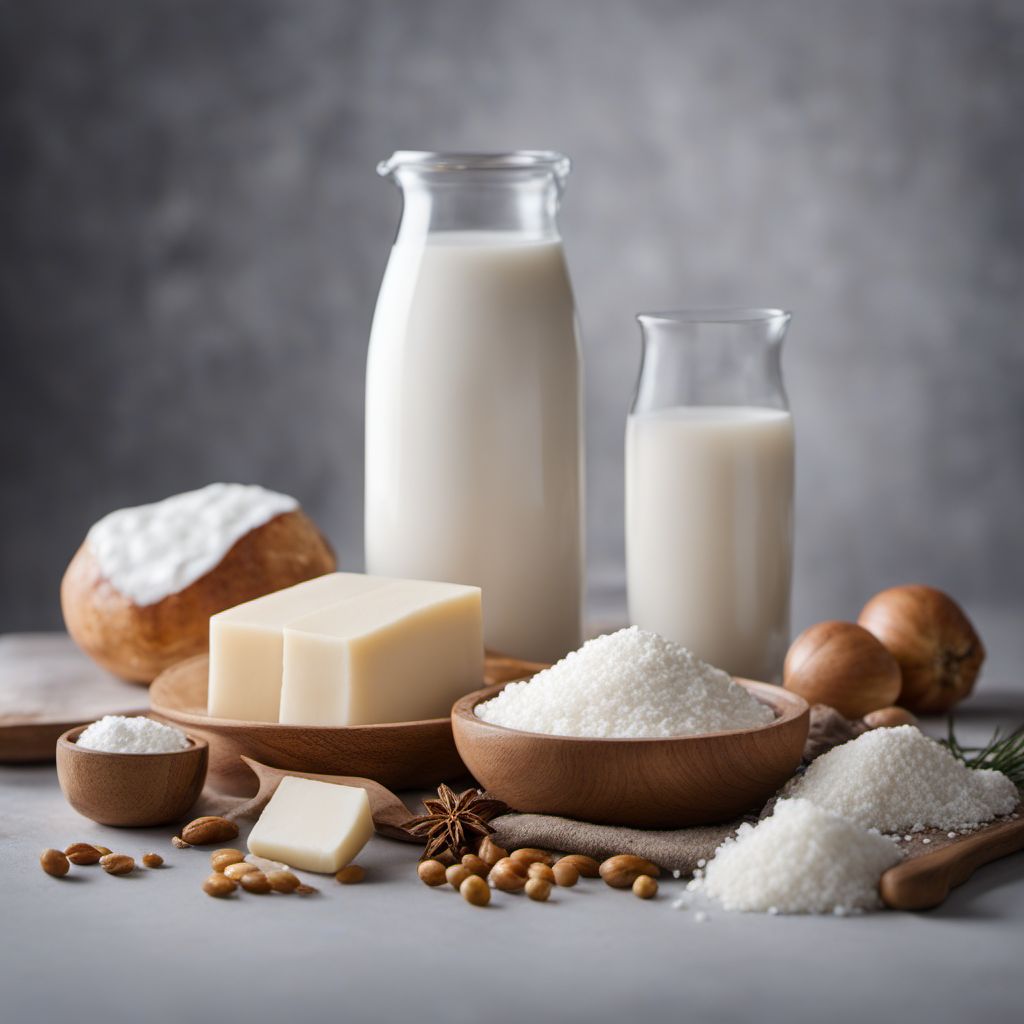
Ingredient
Traditional nordic fermented milks
Cultured Nordic Elixir
Traditional Nordic fermented milks are dairy products that have undergone a fermentation process, resulting in a tangy and slightly sour taste. These milks are often made from cow's milk, but can also be produced using goat's milk or reindeer milk. The fermentation process enhances the milk's nutritional value and creates probiotics, which are beneficial for gut health. Traditional Nordic fermented milks are commonly consumed on their own or used in various recipes.
Origins and history
The tradition of fermenting milk in Nordic countries dates back centuries, with the process being used to preserve milk before the advent of refrigeration. Fermented milks were an essential part of the Nordic diet, providing a source of nutrition during long winters. Today, traditional Nordic fermented milks continue to be enjoyed for their unique flavor and health benefits.
Nutritional information
Traditional Nordic fermented milks are a good source of calcium, protein, and probiotics. They are also lower in lactose compared to regular milk, making them easier to digest for individuals with lactose intolerance.
Allergens
May contain milk and lactose.
How to select
When selecting traditional Nordic fermented milks, look for products that are well-sealed and have a fresh aroma. The milk should have a smooth and creamy texture, without any signs of curdling or separation. Opt for brands that use high-quality milk and have a reputation for producing authentic Nordic fermented milks.
Storage recommendations
To maintain the freshness and quality of traditional Nordic fermented milks, store them in the refrigerator at a temperature between 35°F and 40°F (1.7°C and 4.4°C). Keep them tightly sealed to prevent contamination and consume them within the recommended expiration date.
How to produce
Traditional Nordic fermented milks can be produced at home by introducing specific strains of bacteria to milk and allowing it to ferment at a controlled temperature. However, they are also readily available in grocery stores and supermarkets.
Preparation tips
Traditional Nordic fermented milks can be enjoyed on their own as a refreshing beverage or used in recipes such as smoothies, soups, or baked goods. They can also be used as a substitute for regular milk in various dishes to add a tangy flavor and enhance the nutritional value.
Substitutions
Yogurt or kefir can be used as substitutes for traditional Nordic fermented milks, as they share similar tangy and probiotic qualities.
Culinary uses
Traditional Nordic fermented milks are commonly used in Scandinavian cuisine, where they are enjoyed as a beverage, used in traditional dishes like lutefisk, or incorporated into desserts like rødgrød.
Availability
Traditional Nordic fermented milks are commonly available in Nordic countries such as Denmark, Sweden, Norway, and Finland. They can also be found in specialty stores or international sections of supermarkets in other regions.



